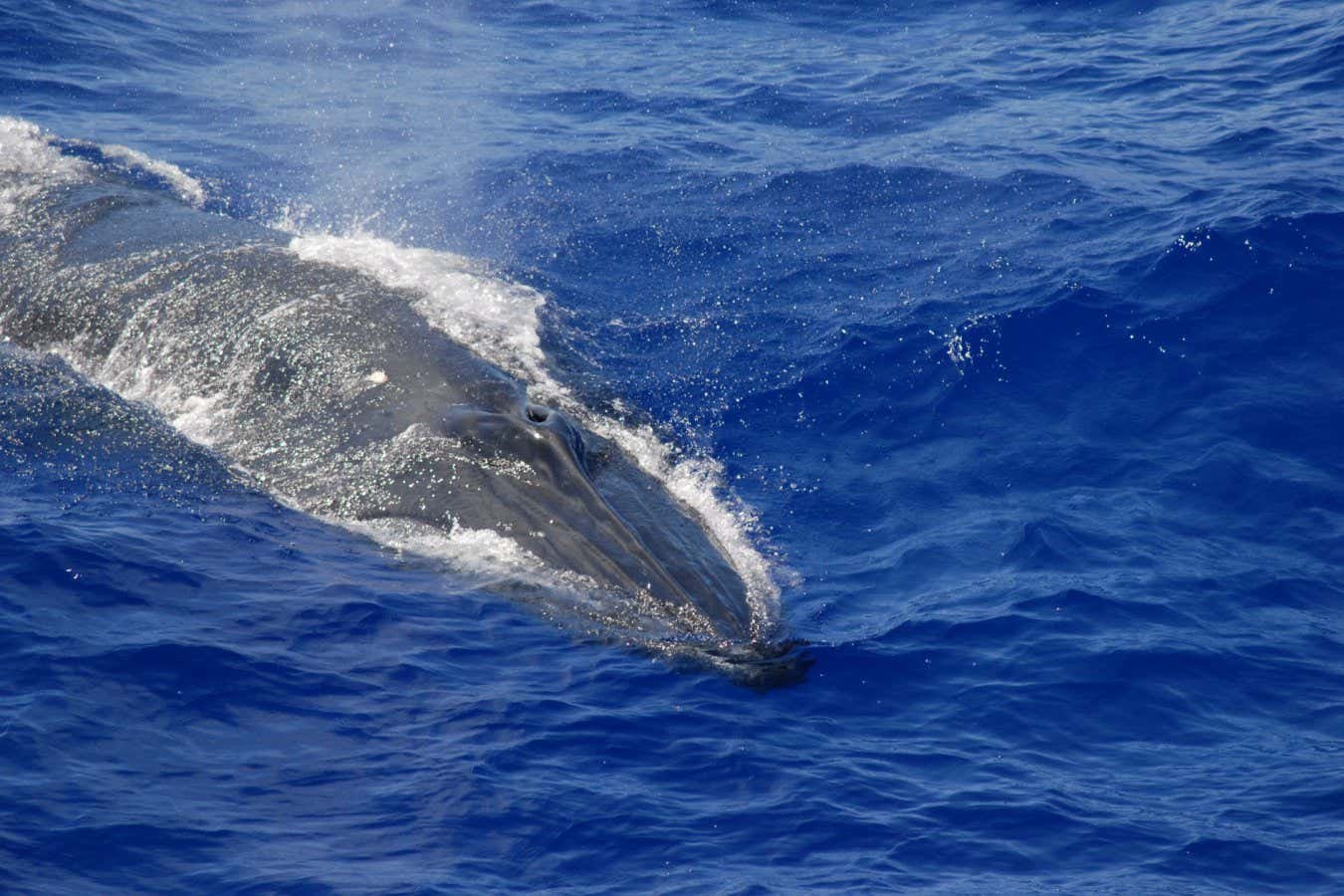
A Bryde’s whale surfacing for air
NOAA Fisheries
A mysterious sound emitted from the depths of the Pacific Ocean has finally been identified as a Bryde’s whale. Now, artificial intelligence is helping researchers track the elusive whale species responsible for the call.
The puzzle began in 2014 when researchers recorded a sound resembling a moan followed by metallic pings over the Mariana Trench. “Your average person would not think that it was made by an animal – they would think it was some ship or the [US] Navy,” says Ann Allen at the National Oceanic and Atmospheric Administration (NOAA).
Years later, additional recordings of the sound, which researchers call a biotwang, were eventually linked to sightings of Bryde’s whales (Balaenoptera brydei) at the nearby Mariana Islands.
Bryde’s whales are large baleen whales that filter huge amounts of krill and fish from the water, but they are rarely seen because they are nearly always on the move. Allen saw an opportunity to track migrating Bryde’s whales by finding similar biotwang sounds in more than 180,000 hours of underwater recordings from NOAA’s network of hydrophones mounted on the Pacific seafloor.
“It’s important any time you can discover a new call type for any species of animal that occurs most of the time out of sight of people because it allows you to use passive acoustic monitoring to detect their presence,” says Caroline Casey at the University of California, Santa Cruz.
Given the impracticality of manually sifting through the audio recordings, Allen teamed up with Google researchers who had been developing an AI model to automatically identify vocalisations of multiple whale species. Google trained its AI to categorise different patterns in spectrogram images, which convert sound to a visual form.
The AI was able to identify calls – a bit like the music-identifying app Shazam – by comparing them to the training set. It was successful at identifying calls from eight species: humpback whales, blue whales, fin whales, North Pacific right whales, North Atlantic right whales, minke whales, killer whales and Bryde’s whales – you can hear one below.
![endif]–>
The team also found that biotwangs occur most consistently among a specific population of Bryde’s whales in the western Pacific. The patterns of calls also suggest the whales may be following the movements of an ocean boundary of warm and cool water. Called the transition zone chlorophyll front, this region of the ocean has a high concentration of plankton and other prey creatures that act as a moving buffet for whales.
“As climate change advances, we expect more frequent and more extreme El Niño and La Niña events, and we expect this transition zone chlorophyll front to go further north and be more variable,” says Allen. “This means that the whales may have to travel further and work a lot harder to find their food, which can impact the health of the population.”
Topics:

